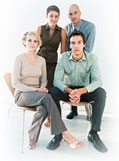|
Watching Your Baby’s First Step
Parents of newborn babies won’t be able to hide their excitement when they see their child trying to carry out his/her first step ever. Babies trying to walk are a good indication that their bodies and mind are developing at a normal rate. Some parents might become a worried if they see that other babies learning how to walk sooner than their own kids. That could happen. Children have their own calendar as to when they will be attempting that very first step. Walking is considered a motor skill. Most of the time, it does not have anything to do with the intelligence of the child or their physical weight and size. And it certainly has nothing to do with one’s parenting skills as well. The only thing that parents should take note is that their babies should have at least tried to walk during their eighteenth month. If attempts to walk seem to take longer than that, it could be time to check with their pediatrician. Parents might observe their babies to be pigeon toed as they try to walk. Generally, during the first two years, all babies have this characteristic. They are all toeing in as they walk. Babies being pigeon footed is all right, as long as they can run and walk without tripping. This problem should correct on its own as the child grows up. But if they are tripping a lot, an orthopedic consultation may be needed. Your baby may appear flat footed too. Again, this is quite normal. All babies seem to have fat pads everywhere, and the arches of their foot are not exempted. But it should go away after a few years. Babies do not form much of an arch until they reach three years of age. This fact also contributes to the tendency of babies to be pigeon toed. To compensate for their being flatfooted, they turn their feet inward when they walk. This creates an arch to make them distribute their weight properly. Mothers can also observe their babies to be bowlegged. This is actually caused by the baby’s fetal position while still inside the womb of their mothers. It is usual for babies to be this way until they reach the age of three years old. Once your baby exhibits the desire to walk, you should think of buying him a good pair of baby shoes. Babies should be given the right kind of shoes because they not only provide support but protection especially from rough surfaces as well as sharp objects. The right shoes also give them the stability and balance. When buying baby’s shoes, consider these points:
2. The upper material should not fit too tightly. There should be some room for the baby to maneuver his little toes. If the shoes are too restricting, he might not feel comfortable enough to walk at all. 3. Choose shoes made of leather. Leather is still the best material for shoes, even for babies. Leather allows the feet to breathe. It lets heat and sweat disperse properly, thus keeping the feet healthy. Canvas and synthetic materials do not provide this comfort. 4. Get the perfect fit. Check your baby’s foot. Some babies have a wide or narrow foot. You have to make sure that the shoes fit the baby well. Babies have soft and malleable bones and that is the reason why this is very important. And as his parent, you’ve got to be extra careful for him. During his walking years, make sure that you ensure his safety and protection. You have to start childproofing your house, for starters. Seeing your baby try to walk for the first time is a wonderful experience. Getting him off to a great start and there will be many other firsts to observe.
What is foot care for healthy feet? With all the walking, your feet experience a lot of wear and tear. For most people, the pain of a blister or cut is a signal to get off your feet and let them heal. But if you have diabetic neuropathy or nerve damage in your feet, the pain signal is impaired or gone altogether, and you may not notice an inquiry until you actually see it. Flat feet or high arches are foot ailments too. The Tarsal Tunnel Syndrome can affect not only the hands, but the foot as well. Bunions, which are bumps or bulges developing on the inner side of the foot mostly near the base of the biggest toe, are another example of foot problems.
 to “Your Health Success” our monthly F’R’E’E’ Newsletter
Back to Top of baby first steps page
============================================================================
|

